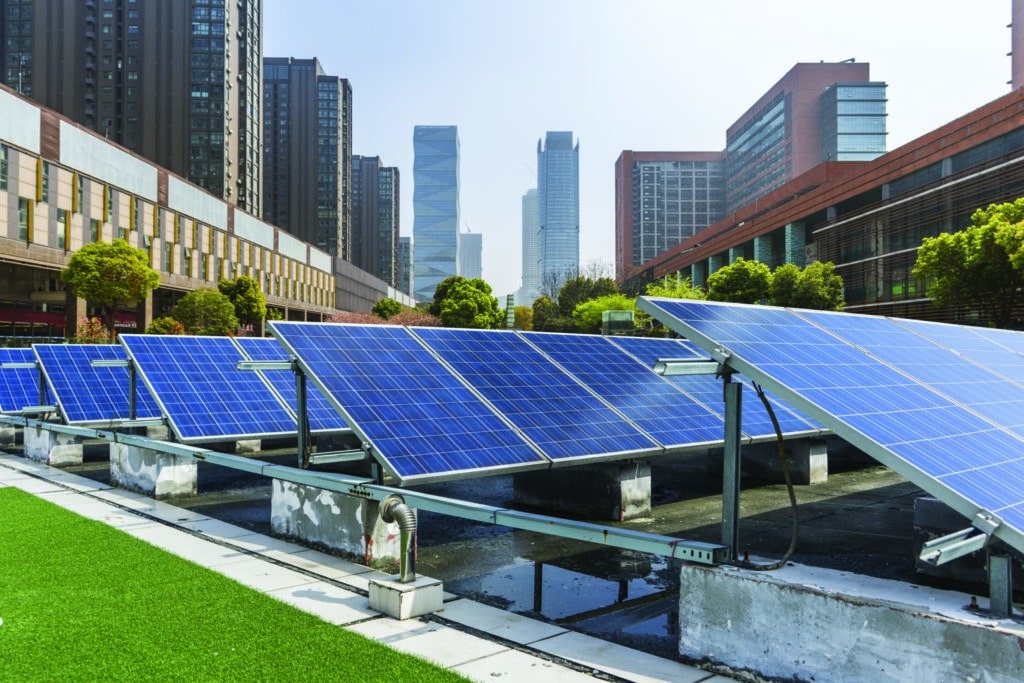The U.S. Green Building Council (USGBC) was very active toward the end of 2018, expanding its LEED for Cities and Communities programs, launching a new net-zero initiative, and releasing the International Green Construction Code.
USGBC’s LEED for Cities and Communities Programs encourage innovation in sustainability on the city and community scale. They are certification programs that take into account water consumption, energy use, waste, transportation, and the human experience and provide third-party verification of the current performance of built-out cities and communities. Activities and performance are tracked and managed through the Arc performance platform. Cities from Washington, D.C. to Songodo, South Korea and Savona, Italy participate in the LEED Cities program and have been recognized for their efforts with respect to sustainability and resiliency and commitment to continuous improvement.
Recently the USGBC integrated the STAR Community Rating System into its LEED for Cities and Communities programs. The 75 cities and communities that have achieved STAR certification and the 20 additional cities and communities that are seeking STAR certification are now part of LEED for Cities and LEED for Communities. In addition, the director of the STAR Communities program, Hilari Varnadore, was appointed the director of the LEED for Cities and LEED for Communities programs.
USGBC has also partnered with the BRE Group, an organization focused on developing knowledge and standards BREAM in green building, with the goal of harnessing their combined industry insights to deliver a new industry approach to green building performance, solutions, and benchmarking. Together, USGBC and BRE will highlight the role that buildings can play in improving environmental, economic, and health outcomes and positively impact the quality of life.
The joint effort will aim to increase engagement for existing buildings, implement a digital strategy that includes establishment of industry-wide data standards and protocols, and conduct research on future opportunities for improving the sustainability of buildings, communities, and cities around the world.
LEED Zero, a program that addresses net-zero operations and resources in buildings, was officially launched in November after its informal release in September. LEED Zero is open to all LEED projects certified under the BD+C, ID+C or O+M rating systems, or projects registered to pursue LEED O+M certification. These projects can achieve LEED Zero certification when they demonstrate any or one of the following: net zero carbon emissions, net-zero energy use, net-zero water use, or net zero waste.
According to USGBC, LEED Zero encourages a holistic approach for buildings and places that will ultimately contribute to a regenerative future. It is a goal of the organization to eventually implement a LEED Positive certification program for buildings that generate more energy than they use and remove more carbon than they produce.
The 2018 International Green Construction Code (2018-IgCC) was also released by USGBC in November in conjunction with the International Code Council, ASHRAE, and the Illuminating Engineering Society. The IgCC is a model code that has wide applicability for incorporating resilient, high-performance green building strategies into building codes to improve the standards of living for people in communities across the globe, according to USGBC.
The update is designed to help governments streamline code development and adoption and to improving building industry standardization by integrating the two guidance documents ANSI/ASHRAE/USGBC/IES 189.1 – Standard for the Design of High-Performance Green Buildings Except Low Rise Residential Buildings and the Code Council’s multi-stakeholder International Green Construction Code.
When pursuing LEED certification in jurisdictions that adopt the IgCC green code, USGBC will allow project teams to be recognized in LEED for their compliance to select IgCC measures.
The IgCC is a part of the Code Council’s suite of model codes, which includes the International Building Code, International Existing Building Code, International Energy Conservation Code, International Mechanical Code, International Plumbing Code, and International Fire Code. It is suitable for use in building codes around the world, and many of the International Codes are incorporated into building design and compliance processes across the United States and in many other countries.
It is also interesting to note that according to the most recent Dodge Data & Analytics World Green Building Trends 2018 SmartMarket Report, significant increases in green building are expected in 19 countries over the next three years, with nearly half of survey respondents expecting the majority of their projects to be green buildings. The survey included 2,000 building professionals including architects, contractors, consultants, developers, engineering firms, and investors in 86 countries.
Two-thirds of survey participants indicated that using a rating system like LEED allows them to create a better performing building, while more than half believe that the third-party verification provided by rating systems ensures that buildings are running in a sustainable manner.
Specific benefits most cited by survey respondents include occupant health and wellbeing and lower operating costs. Encouraging sustainable business practices and improved worker satisfaction and productivity are additional drivers for green building. Building owners participating in the survey also indicated that new green buildings have higher asset values (by ~10%) than traditional buildings. The majority of green buildings today are new commercial structures, but over half of survey participants expect retrofitting to increase in the coming years.
